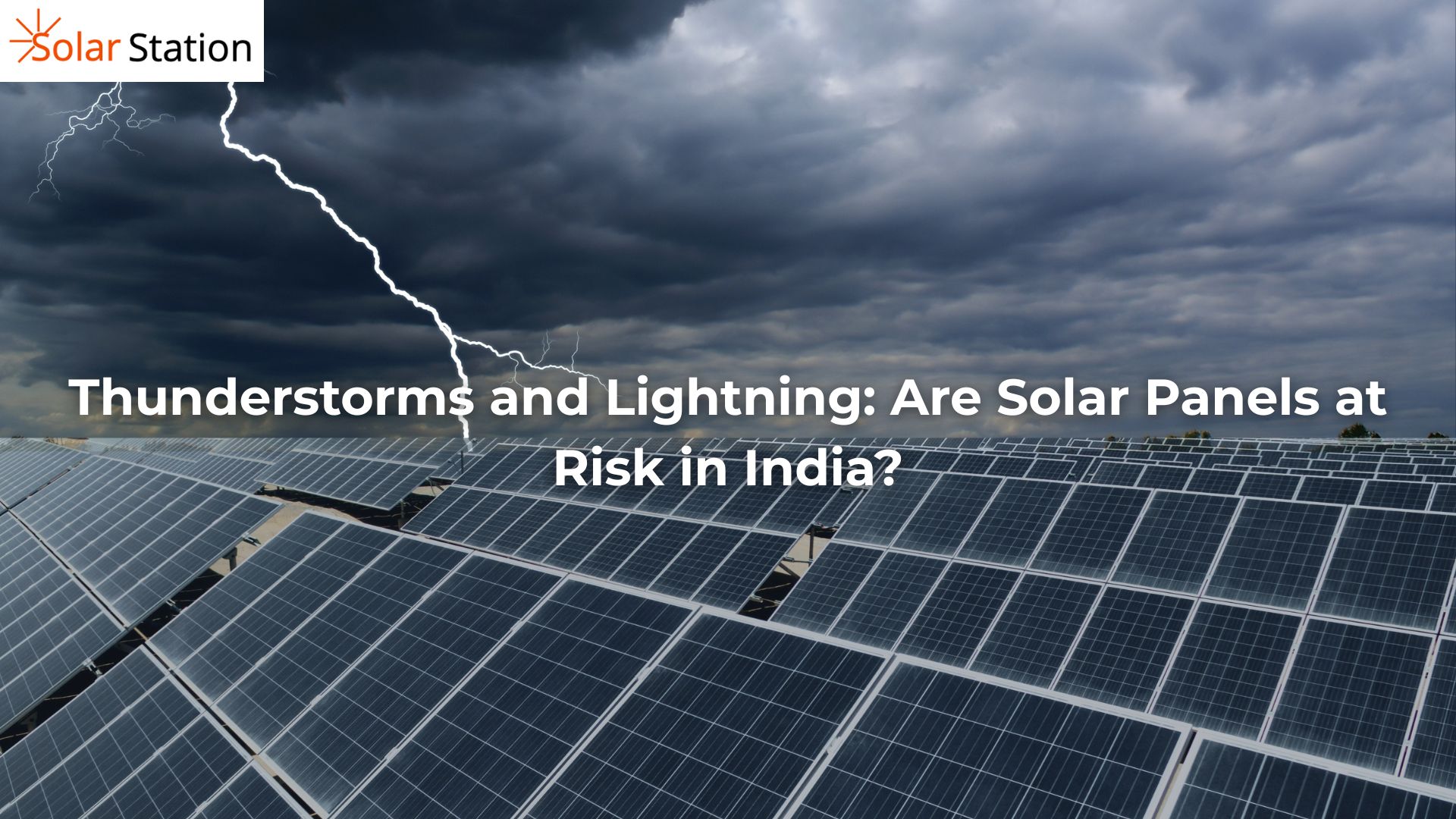
Thunderstorms and Lightning: Are Solar Panels at Risk in India?
Date: 2025-09-17
Thunderstorms and lightning are common in India and can damage solar panels, especially inverters. Learn how lightning arrestors, grounding, and surge protection safeguard your solar investment.
India has seen a significant increase in solar power adoption. From residential rooftops to large solar farms, many are investing in clean energy to lower their electricity bills and lessen reliance on fossil fuels. However, along with the sunshine, India also experiences intense monsoons, thunderstorms, and frequent lightning strikes, particularly in states like Kerala, Maharashtra, Karnataka, and Odisha.
This raises a key question: Are solar panels at risk during thunderstorms and lightning in India? Let’s break it down simply.
Understanding the Threat of Thunderstorms and Lightning
Before discussing the risks to solar panels, let’s look at what happens during a thunderstorm:
Thunderstorms bring strong winds, heavy rain, and sometimes hail.
Lightning is a sudden electrical discharge caused by imbalances between storm clouds and the ground.
India ranks among the top countries for lightning strikes. Government reports indicate that lightning has caused thousands of deaths and damage to infrastructure in recent years. For solar owners, the concern is valid: a lightning bolt or a storm could damage expensive panels or equipment.
How Can Lightning Affect Solar Panels?
Lightning doesn’t always hit solar panels directly. The risk comes in two main forms:
Direct Lightning Strike
If lightning directly strikes a solar panel, it can cause severe damage. The surge of electricity can shatter glass panels, burn out circuits, and destroy inverters instantly. However, these direct strikes are relatively rare.
Indirect Lightning (Electromagnetic Surge)
More often, lightning strikes nearby and cause sudden voltage surges in power lines. These surges can enter the solar system and damage sensitive electronics like inverters, charge controllers, and batteries.
Think of it like a shockwave: the panels may remain intact, but the system’s sensitive parts can fail.
Risks During Thunderstorms Beyond Lightning
Thunderstorms bring conditions that also threaten solar panels:
Strong Winds: Winds can dislodge panels if the mounting structure is weak.
Heavy Rain: Lower-quality panels may have water leakage issues.
Hail: Although rare in most parts of India, hailstones can crack panels if they aren’t impact resistant.
Are Indian Solar Panels Built to Handle Lightning?
Here’s the good news: Yes, most quality solar panels in India meet international safety standards.
Panels are usually tested for mechanical strength and weather resistance, including hail, rain, and wind.
Inverters often include basic surge protection systems.
Manufacturers offer warranties, typically lasting 10 to 25 years, which cover defects but not always natural disasters.
That said, no solar panel is entirely immune to lightning. The key is to install the right protection systems.
Protection Measures for Solar Panels Against Lightning
If you live in India, especially in lightning-prone states, here are effective ways to protect your solar investment:
1. Lightning Arrestors
A lightning arrestor is a device installed near your solar system to safely divert high-voltage lightning surges into the ground. It acts like a shield, protecting your panels and electrical system.
2. Earthing / Grounding
Proper earthing ensures that any extra electrical charge from lightning or surges safely flows into the ground instead of damaging your equipment. Every solar system in India must have a grounding system as per the Ministry of New and Renewable Energy (MNRE) guidelines.
3. Surge Protection Devices (SPD)
SPDs act like shock absorbers for sudden voltage spikes. They are installed in the inverter and distribution box to protect sensitive electronics.
4. Strong Mounting Structures
To withstand thunderstorms, panels must be securely mounted with designs that resist wind. Poorly installed panels can get uprooted by strong winds.
5. Insurance for Solar Systems
In India, solar insurance is available for a small premium. It covers risks like fire, lightning, storms, and even theft. Many homeowners overlook this, but it is one of the best ways to protect a significant investment.
Real-Life Examples from India
Kerala (2018–2020): Several cases were reported of residential solar systems getting damaged during heavy lightning storms. In most cases, the inverters failed due to surges, while the panels remained intact.
Odisha: Known for frequent lightning strikes, solar farms in Odisha often use advanced arrestors and grounding systems to avoid downtime.
Maharashtra and Karnataka: Farmers installing solar water pumps have increasingly been advised to use surge protection due to recurring monsoon storms.
What Happens If Lightning Damages Your Solar System?
If a solar system gets hit:
Panel Damage: Cracks or burn marks may appear on the glass.
Inverter Failure: The most common issue because inverters are highly sensitive to surges.
System Shutdown: Your system may stop working until it is repaired.
Tips for Solar Owners During Thunderstorms
Turn Off the System: If a thunderstorm is predicted, switch off your inverter and disconnect the system to reduce risk.
Schedule Regular Maintenance: Ensure grounding wires and arrestors are checked yearly.
Don’t DIY Protection: Always hire certified solar installers to set up lightning protection.
Monitor After Storms: After heavy rain or lightning, check your system's performance through the monitoring app or inverter display.
Conclusion
Thunderstorms and lightning in India are natural and unavoidable, but they don’t have to threaten your solar investment. While direct lightning strikes are rare, indirect surges can happen often and result in costly damage, mainly to inverters. By installing lightning arrestors, surge protection devices, proper grounding, and considering insurance, you can keep your solar panels safe and productive for decades.
So, if you plan to go solar, don’t worry about the storms—just ensure your installer includes a strong protection plan. After all, the sun shines brighter after every storm, and with solar panels, you can continue harnessing it safely.











